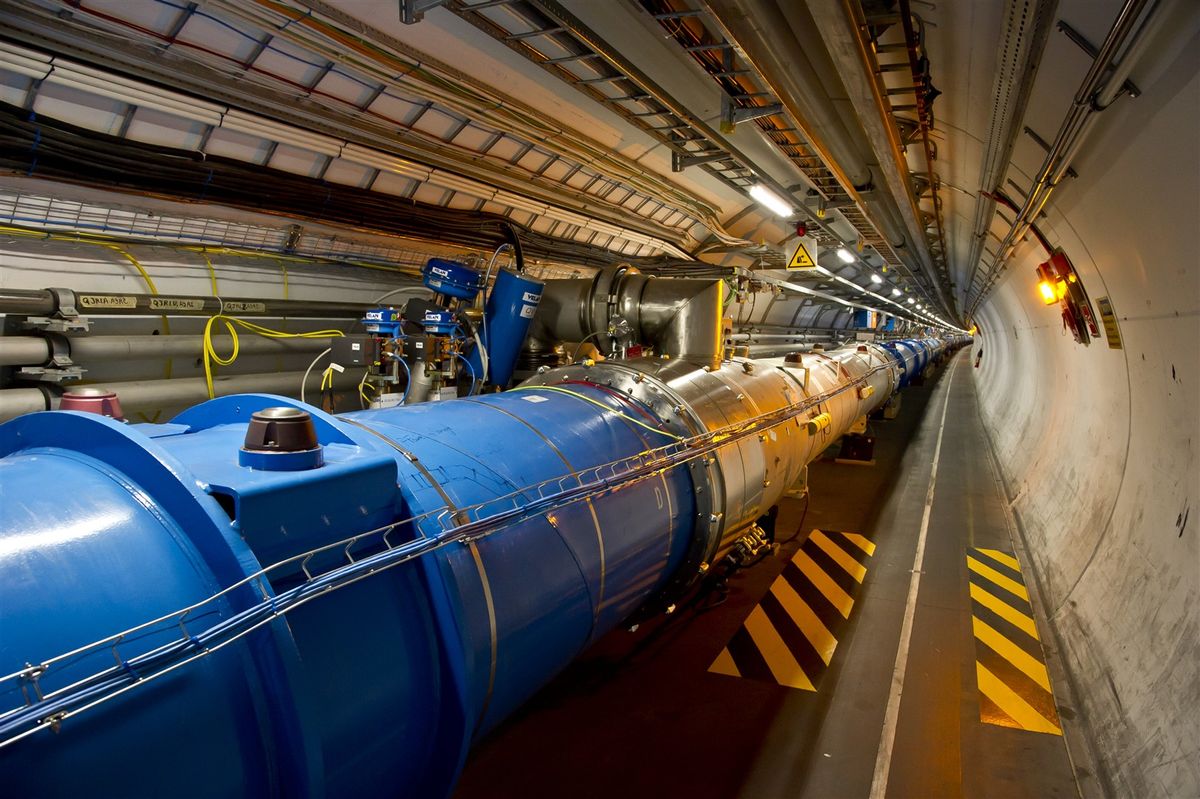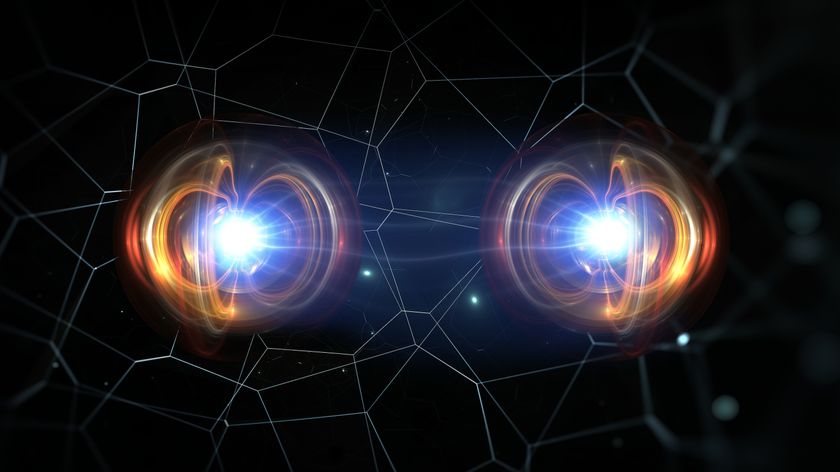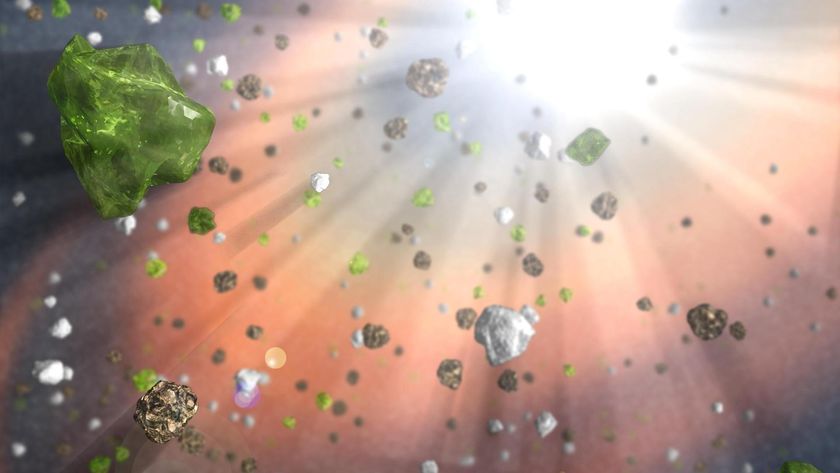Moon's Tides Affect Humongous Atom Smasher, Too

The world's largest atom smasher has tides, it turns out.
The moon, which pulls Earth's seas in and out with its gravity, similarly affects the Large Hadron Collider in Europe, requiring physicists to make periodic adjustments to the extremely sensitive machine.
The collider is a 17-mile (27 kilometers) ring buried underneath Switzerland and France, where protons are sped up and then crashed into each other to produce spectacular explosions that give rise to exotic particles. These collisions only occur when the beams of protons are finely tuned to intersect in just the right spots; such fine-tuning includes taking into account everything, including the moon, that affects the precise geometry of the setup.
"We all know the moon creates tides," Indiana University physicist Pauline Gagnon wrote on the particle physics blog Quantum Diaries."This happens because the moon pulls on the ocean as it circles around the Earth. The Earth crust feels the same pull, but since water is much easier to move than the Earth crust, almost nobody ever notices the small Earth deformations. But the LHC operators do because the accelerator is both very large and very precise."
Tidal forces occur because the strength of gravity depends on how far apart two masses lie — the closer they are, the greater the gravitational force between the two. Thus, the side of Earth nearest the moon feels a stronger pull than Earth's far side, causing the Earth to deform slightly. [Stop the Lunacy! 5 Mad Myths About the Moon]
When our planet's crust stretches toward the moon, it takes the Large Hadron Collider with it. As the accelerator shifts, the beams of protons traveling through it start moving slightly off-course, not quite aligned with the curve of the ring's walls. For this reason, LHC operators make periodic adjustments to the beams to compensate.
Gagnon learned this when taking her turn as shift leader for the collider's ATLAS experiment. At one point, a colleague pointed out that the graph keeping track of how many proton-proton collisions were happening each second kept taking periodic dips.
Sign up for the Live Science daily newsletter now
Get the world’s most fascinating discoveries delivered straight to your inbox.
"So I called the LHC control room to find out what was happening,"Gagnon recalled. "'Oh, those dips?' casually answered the operator on shift. 'That's because the moon is nearly full and I periodically have to adjust the proton beam orbits.'"
In fact, the effect happens throughout the month, but is felt most strongly when the moon is full or new, because that's when the moon and sun are aligned, so their tidal forces on Earth are combined for a boosted effect.
Each time the LHC operator corrected the proton beams' orbits, he also performed a small scan of the two beams to realign them, causing a brief dip in the frequency of collisions, which showed up in the plot.
"What came as a surprise to me was to witness the dynamic aspect of it," Gagnon wrote. "As the moon was rising in the sky, the force it exerted changed ever so slightly, but even these infinitesimal changes were big enough to require a periodic correction of the orbit of the proton beams in the accelerator to adapt to a deformed tunnel."
Follow Clara Moskowitz on Twitter @ClaraMoskowitz or LiveScience @livescience. We're also on Facebook & Google+.












